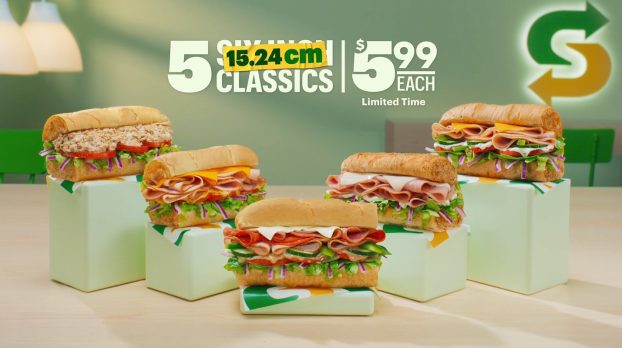As VP marketing, grocery at Kraft Canada, Domenic Borrelli has a lot on his plate – Miracle Whip, BBQ Sauce, Stove Top Stuffing – 11 brands in total. But it’s his recent work on two of Kraft’s most iconic brands that’s stirring up attention.
In the past year, Borrelli has gone in new directions with Kraft Dinner and Kraft Peanut Butter – brands that are synonymous with the Kraft name. He’s launched a social networking site for KD and embarked on an unprecedented campaign for Peanut Butter that includes PR and web efforts. So why mess with the classics? Because Borrelli wants them to keep growing and changing with the times: ‘I hope my legacy will be to leave my businesses with a stronger connectivity and relationship with Canadian consumers.’
Arguably the most iconic Kraft brand in Canada is Kraft Dinner. Unlike in the U.S., KD packaging doesn’t even need to specify its mac-and-cheese nature here, because Canadians know exactly what it is. Kraft Dinner has dominated kitchen pantries for 72 years, and Borrelli has worked on the brand for five, first as brand manager, then business director and now as VP. In order to best promote the brand, Borrelli had to develop a strong understanding of how storied it is. ‘KD is their brand, it’s not our brand,’ he says. ‘It’s a brand that is so iconic in the minds and hearts of Canadian consumers that it really belongs to them.’
Kraft Dinner also presented Borrelli with a unique challenge – it has different appeal to various demographics. ‘[It gave] me the opportunity to work on a category that had multiple consumer segments, so we focused on kids as well as teens and young adults,’ he says.
The way KD had been reaching those different demos for the past 10 years was through variations of the ‘Gotta be KD’ campaign with numerous TV, OOH and cinema ads. As Borrelli came on board, so did new product innovations such as microwaveable Easy Mac, Kraft Dinner Cups and a whole wheat version (the brand now has four product platforms: Original, Cups, Easy Mac and its flavour/noodle varieties). And Borrelli had to introduce these new products while being mindful of hitting the right targets. ‘We spent considerable time with the consumers to understand the role of KD in their lives,’ he says. For example, that it’s an easy choice for moms because they don’t have a hard time feeding it to their kids.
Borrelli and his team absorbed the insights and sat down with their agency partners to come up with a plan consistent with the broader KD equity. The result was a campaign that included a new animated TV spot for original KD aimed at kids and a print campaign for whole wheat that targeted moms, running in women’s magazines such as Chatelaine, Canadian Living and Homemaker’s. In 2008, whole wheat and KD Cups were significant growth drivers, adding to KD’s overall dollar share increase of close to a full share point.
Borrelli and his team were also looking for ways to target teens without alienating other demos. While researching this group, they found a link between how teens live and how they eat Kraft Dinner. ‘A lot of folks who really love the brand love to customize it,’ says David Gibb, EVP managing director at JWT, the agency on Kraft Dinner. ‘That’s true about teens’ relationship with the brand, but also with the rest of their lives. They all want to be unique and different and exert their individuality.’
Another truth about teens is that they’re spending more time online. With those insights, Borrelli led his team into the world of social networking. They worked with JWT, Digital Cement and MediaVest to come up with Unikd.com, a site where teens can interact with KD-loving peers, post content and enter contests, such as the ‘Sweet Suite Showdown,’ whereby they submitted images of their rooms to vie for a bedroom makeover, determined by member voting. Launched
Oct. 1, 2008, Unikd.com was pushed on KD boxes and though a partnership with CTV’s website, and had just over 50,000 members at press time.
‘Everyone talks about [social networking], everyone wants to do it,’ says Gibb. ‘The challenge is coming up with an idea that will allow you to do it with your target in your category for your brand. And that is exactly what Dom has been able to inspire the team to do on KD. [He encouraged] people from different parts of the team to come forward with new and interesting, fresh thinking, but at the same time, making sure that people don’t run off in different directions.’
Valerie Lemant, who worked with Borrelli on Kraft Dinner for a year before moving on to her current position of senior product manager, credits his change-embracing leadership for getting the website off the ground. ‘Now the media is above and beyond TV so we need to stay abreast of the trends you see in market,’ she says.
Borrelli also opened the door for change on Kraft Peanut Butter, another iconic brand for many Canadians, who gravitate towards the cuddly teddy bears on the jar.
Advertising for the brand – which has seven variations including Crunchy, Smooth and Extra Creamy – had previously been minimal and primarily TV. But in 2008, Borrelli saw an opportunity to drive growth by embarking on a larger multimedia campaign. After extensive research, they discovered that peanut butter consumers had a very strong emotional connection with the brand, especially in the morning. ‘We really saw an opportunity to engage the consumer, by demonstrating that we understood what role the brand played in their lives,’ Borrelli says. ‘We believed the best representation of that feeling [that peanut butter gives them] was a very simple visual to give them that smile inside and remind them how it makes them feel.’
From this insight came the ‘Spread the Feeling’ campaign, centered around the visual of a piece of toast with images drawn into peanut butter such as a sun, a happy face and a peace symbol. Working with their ad agency for the brand, Draftfcb, as well as Momentum, MediaVest and Edelman, the campaign, which launched last July in Ontario and is rolling out in Quebec and the western provinces this year, consists of PR, OOH, TV and cinema ads, print and online advertising. This includes ads in elevators and women’s fitness centres in Toronto, targeting peanut butter’s main buyer – adult women.
The campaign kicked off with a ‘Hug Day’ event at Ontario Place in Toronto last summer. A street team dressed up as the familiar Peanut Butter Bears and gave hugs to passersby. For every hug they received, Kraft donated a jar of peanut butter to the Daily Bread Food Bank. People could also give a virtual hug at Spreadthefeeling.ca, which was pushed through print ads in Metro, on radio and through viral emails. In total, Kraft donated 10,382 jars of peanut butter, exceeding its goal. Due to the positive response, they plan on doing more Hug Days in the coming year. Overall, Kraft Peanut Butter grew by 1.6 share points in 2008.
Borrelli attributes part of his success to Kraft’s commitment to developing its people – training recruits to grow into leaders within the organization, as Borrelli did himself, which he’s now paying forward. ‘For a full year he tried to help me get to the next level,’ says Lemant. ‘He takes time to celebrate business results, but also personal achievements and contributions.’
When Borrelli walks into a party and tells people he works at Kraft, he says the conversation quickly turns to Kraft Dinner. ‘It doesn’t take long to get to people’s personal experiences with this particular brand, whether it’s how they had it as a kid, or how they serve it to their own kids today,’ he explains. In Borrelli’s hands sit not only iconic brands, but ones that are deeply imbedded in Canadians’ personal lives and memories. Experimenting with icons is a high-stakes game corporately, not to mention answering to all those consumer ‘brand owners’ with strongly held opinions.
But he can handle it, according to Gibb, who, when asked to describe Borrelli’s style, gives a laundry-list of adjectives: ‘Smart, strategic, collaborative, empowering, calm, cool, collected, balanced,’ noting that these qualities have caused Borrelli to take the time to develop a deeper understanding of the connection people have with his brands. ‘He’s just a great guy to have at the head of the team.’
BIO:
Birthplace: Toronto, Ont.
Education: MBA from York University
Kids: Two daughters, ages five and seven, who he says would eat Kraft Dinner at every meal if they could
Career: Recruited by Kraft in 1995 upon graduation and began as brand assistant in the cereal division. He then worked his way up on several categories such as enhancers, which include salad dressing and Miracle Whip (which he still works on today) and ran the cheese business where he led a new campaign re-focusing advertising investments on shredded cheese. He has spent the past 13 years at Kraft except for a nine-month hiatus in 2000 when he worked for Microsoft
FIVE QUESTIONS:
How do you prepare your Kraft Dinner?
The classic way – I boil the water, cook the pasta, add some butter and 1% milk and voila!
Do you like chunky or smooth peanut butter?
I like Kraft Smooth Peanut Butter, but I like Extra Creamy too which is a fun twist.
Who is a marketer you admire?
Dove. I think they’ve done a great job of developing a deep understanding of their consumer and building a strong relationship as well as success in their business.
What was your first job?
I was a paper boy for the Toronto Star. I was about 13.
What’s your favourite TV show?
Law and Order – talk about a great show! It’s continued to extend and find different ways to keep it topical and relevant to different viewers.





















